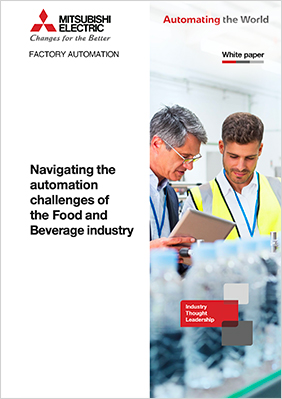Solutions
Food & Beverage


Skilled Workforce Shortage
Many industries are facing a similar challenge and that is the shrinking workforce. Food and beverage manufacture's often face a double hit, as their aging workforce approaches retirement they loose staff, but in addition when skilled members are lost there is also the loss of their retained production knowledge.
Challenges
-
 Challenge 1
Challenge 1Assisted Worker Strategies
The use of co-bots and robots in general can be an effective way to overcome labor shortages, supporting and assisting workers as they execute their tasks.
An additional source of help can come by using AI to record and analyze production processes. This can frequently reveal what many production workers know by instinct and make that knowledge available to the newer workers so that they can also operate at peak performance. -
 Challenge 2
Challenge 2Effective Training Programs
Training of both automation production experts and line workers is equally important.
By utilizing digital twins and sharing insights gained from AI analysis, production can accelerate both. -
 Challenge 3
Challenge 3Changing Behavior
Continuous training and review are important for everyone.
But equally sharing production goals and operational achievements through Andon systems also lead to a better informed and more motivated workforce. Even basic messaging to direct attention to simple tasks like switching lights off can impact energy consciousness.
Discover the Future of Food & Beverage Automation
Unlock the full potential of automation in the food and beverage industry with our latest thought leadership white paper. From navigating the complexity of production processes to tackling workforce shortages and ensuring regulatory compliance, this essential resource offers actionable insights and innovative solutions to overcome the sector's toughest challenges.
Key Highlights:
- Proven strategies for integrating automation with legacy systems
- Insights into balancing product customization with efficiency
- Best practices for maintaining food safety and hygiene standards
Stay ahead of the curve—download your copy today and start transforming your manufacturing operations!
Register to download here:



